Gift Wrapping
Photos by Forrest Anderson
In September, my sister and her husband dropped by our home and bequeathed to me an enormous treasure chest (okay, so it was a plastic bin) filled to the brim with wrapping paper, ribbon, gift boxes and bags, gift tags and gift stickers.
I couldn’t have been more delighted – it was a designer’s dream. Some of the paper in the box belonged to my mother and harked back to the brightly colored designs of the late 1960s, Holly Hobbie of the 1970s and sparkles and glitter of the 1980s.

Vintage samples from my paper treasure hoard.
I squirreled the lot away in the basement craft room and forgot it until it became obvious that this year’s Christmas was going to be … well, remote.
The timing of my new hoard couldn’t have been better. When you can’t hang out with your loved ones, thoughtful and beautiful gift wrapping that sends a message of concern can help take the edge off the distancing. As I got out my paper treasures and set to work, I found that gift wrapping also helped take the edge off a weekend in which the pandemic numbers were at a record high.
Paper was first used to wrap gifts in ancient China, not surprisingly since paper was invented there in the 2nd century BC. Red paper signifies good luck, happiness and good health for the recipient. The Chinese imperial court presented wrapped gifts to government officials on special occasions. Paper still is an important component in beautiful gifts presented in an official capacity in China, such as calendars and art books of traditional Chinese paintings. Monetary gifts are given in beautiful red paper envelopes to children at Chinese New Year.
The custom of gift wrapping spread to other Asian countries, where gorgeous wrapping paper and exquisite or endearing cards and envelopes and ribbon can be as important a part of a gift as the gift itself. Many of these items are works of art. I have kept some of these paper items that have been given to me by Chinese, Taiwanese and Japanese friends long after the gift that went with them was used and discarded. And I never fail to visit stationary and craft stores in Asia to see the enchanting cards and paper in them.
In the West, decorated paper emerged as early as 1509 with wallpaper, but it was too fragile to be very useful as gift wrapping paper. By the 1700s, brown paper, called shop paper, was used to wrap packages. Paper baskets were made in the 19th century for gifts, and after 1837, the wealthy used wrapping paper decorated with flowers, cherubs and birds and tied with lace and ribbon. Boxes and bags also were decorated. Charles Dickens’ 1843 story, A Christmas Carol, described packages wrapped in brown paper.
Toilet tissue was invented in 1857, followed by tissue paper for gift wrapping. By the 1880s, stockings hung by the fire or bed and filled with presents were common. In 1912, cellophane was used to wrap Whitman’s candy. It later began to be used along with regular paper as wrapping paper.
As with Christmas cards, Hallmark is responsible for helping to popularize decorative gift wrapping in the United States in the early 20th century. One of the company’s stationery stores ran out of traditional white, red and green tissue papers and began selling decorative French envelope liners as wrapping paper. They were popular, so the company began making and promoting the patterned papers. Ribbons were added in the 1930s. The 1930s and 1940s was an era of Art Deco snowflakes, ice skaters, Christmas trees and candles on wrapping paper and also of the invention of Scotch tape, which superseded string and sealing wax to keep gifts sealed.
From 1939 to 1945 in the United States, gift wrap was exempt from rationing to keep people’s morale up during World War II. In the 1970s and 1980s, wrapping paper began to have popular movie and television characters on it.
Americans now spend some $2.6 billion annually on wrapping paper, with half of the 85 million tons of paper products the United States consumes going to packaging, wrapping and decorating items. Wrapping paper was a $16.2 billion industry globally in 2019.
Why do we spend so much on wrapping paper? We wrap gifts because the anticipation of opening a decorative box tied up with ribbon adds to the holiday excitement and makes it more festive. Studies indicate that gift wrapping has a significant effect on how meaningful a recipient considers a gift to be. It creates a bias toward the gift itself. In some cultures and circumstances, it is expected that a gift be well wrapped and an unwrapped gift is considered inappropriate. The act of wrapping gifts also brings back happy memories and is creative, both of which elevate our mood.
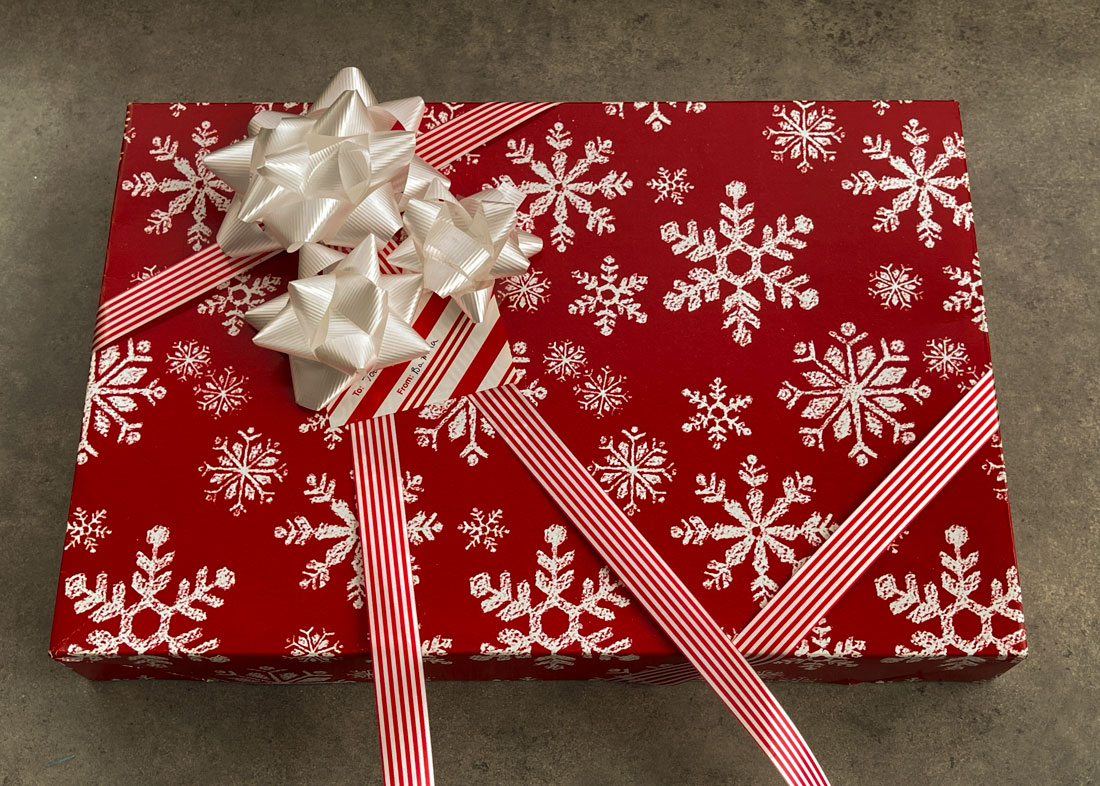
However, wrapping paper has gotten a bad rap in recent years because of environmental concerns. In the United States, an additional five million tons of waste are generated during the Christmas season and four million of it is wrapping paper and shopping bags. Here are some ways to mitigate the problem and still enjoy wrapping and giving beautiful gifts:
- Unwrap gifts carefully and reuse at least some of the paper.
- Use decorated cloth gift sacks or lengths of cloth instead of paper, and then reuse them from year to year. This approach, called furoshiki, is popular in Japan and includes ingenious ways of wrapping and tying the cloth. Cloth gift wrapping also is traditional in Korea. I've used fabric scraps before to do this. Textile gift wrapping materials are experiencing steady growth as part of food and beverage gifts. Manufacturers are producing innovative fabric gift bags to increase this demand. Wrapping a food gift in a cloth napkin or kitchen towel is an attractive way to employ this strategy.
- Use a reusable box or basket and instead of concealing gifts, showcase them as part of gift baskets.
- Use gift bags or boxes and then reuse them in subsequent years.

- Reuse as wrapping paper other papers that normally would be discarded. Some shopping bags and boxes are made of beautiful paper and are so beautifully designed that they can be reused as wrapping paper or simply placed under the tree with a bow and a gift tag. Recyclable brown paper bags make beautiful wrapping paper tied with yarn, brown or gold ribbon or twine. When I was a teenager, I sometimes used the comic section of newspapers as wrapping paper for gifts for friends. I tied them with colorful yarn and topped them off with lollipops. Old road maps make fun wrapping paper for travel-related gifts.
- If your community has recycling facilities, recycle as much wrapping paper and Christmas boxes as possible rather than sending them to a land fill.
- When buying new wrapping paper, look for recycled kinds, which are sold on Amazon and other outlets. We can expect to see more recyclable wrapping paper in the future, as a major trend in the paper industry in general and wrapping paper in particular is biodegradable papers made of recycled waste material. These papers can be disposed of by composting. This is a key environmental concern of the paper industry, which is growing because engineers have found that almost anything can be made from paper, from circuit boards to a wide variety of products that have previously been made from plastic but have been banned for environmental reasons.
- Instead of buying one-use ribbons, use reusable ribbon, yarn or string for decorating packages. You also can use scraps of lace from sewing projects.

Manufacturers also are producing reusable wrapping papers. Corrugated decorative boxes, followed by pouches and bags, are experiencing fast growth as they can be shipped and placed under the tree as-is. Decorative boxes used for luxury gifts like cosmetics and glass items eliminate the need for a second packaging of a gift with wrapping paper. I've found that I also can recycle some of this beautiful packaging for other gifts.
Check out these related items
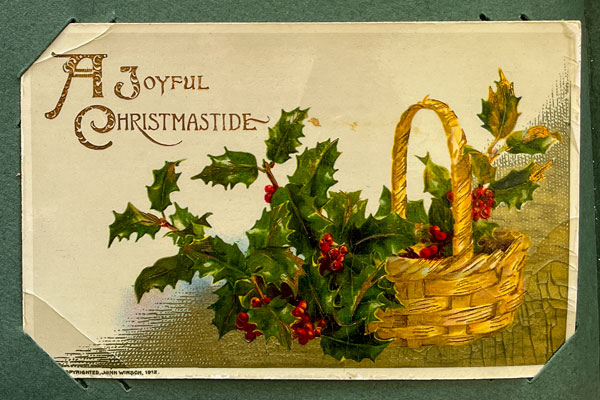
Connect With Christmas Cards
Christmas cards are having a resurgence in popularity as a safe and special way to contact loved ones.
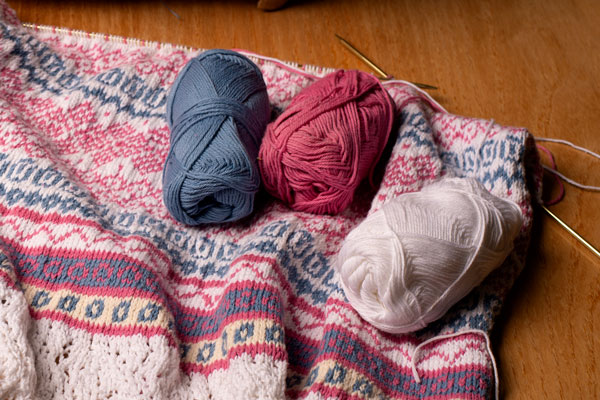
How Crafts Help Us Cope
Crafts are booming as people shelter at home during the pandemic. We explore why, as well as ways to learn a new craft without stressing out.

Illuminated Manuscripts
Illuminated medieval manuscripts preserved culture and religious beliefs and set a foundation for book design and art styles.
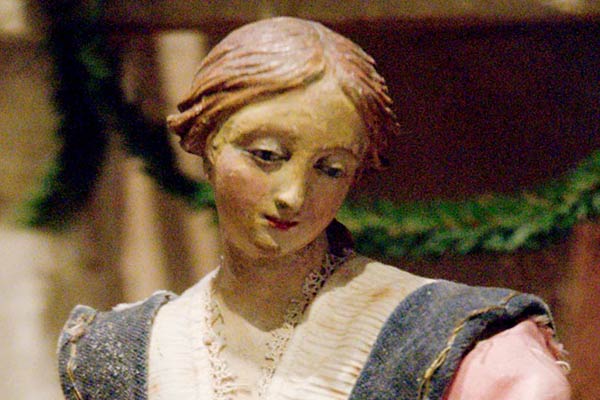
Non-biblical Nativity Figures
Why are those figurines in large nativity scenes dressed in European dresses and broad-brimmed hats instead of Biblical costumes?
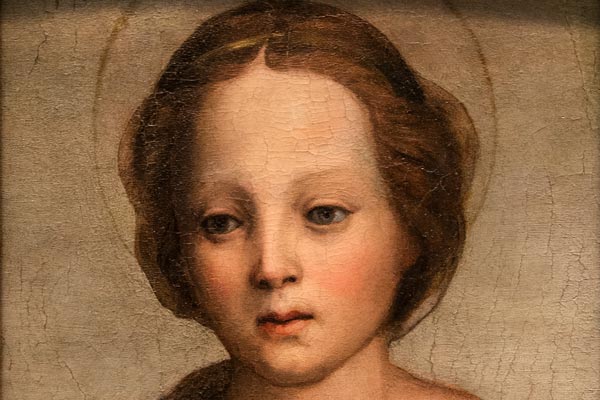
Portraits of Mary
Mary, the mother of Christ, may be the most prominent visual icon in the world. We explore her history.
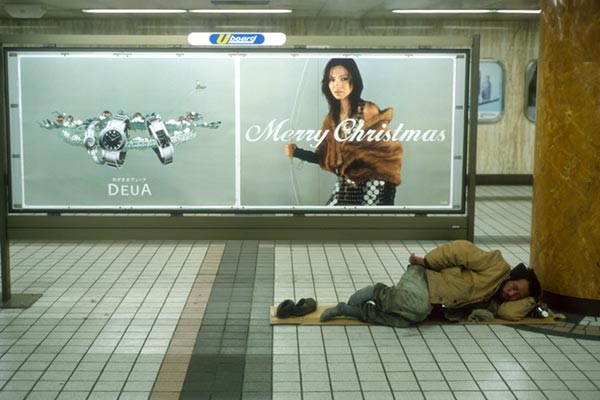
Wise Men Came Bearing Gifts
We all want to give during the holiday season. Here are some tips on how to give wisely and well.
